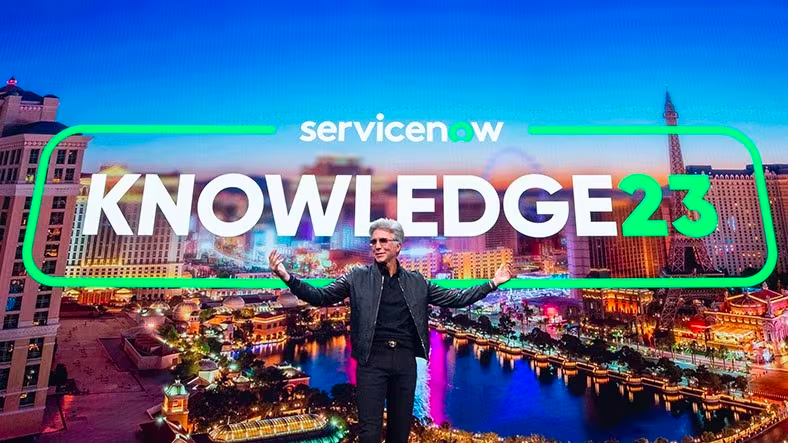
Attending ServiceNow’s Knowledge 2023 Global Conference was exciting, not least of all because it was the first conference I’ve had the pleasure of attending since COVID began, but also because it was such a great distillation of some big industry meta-themes emerging now and over the past few years. Here are the trends I saw:
Technological advancements are, as always, reshaping the way we work and interact with information; although at this moment with high velocity. Low-code and no-code frameworks have emerged as powerful tools that are revolutionizing the speed of development, degree of customization, and agility to deploy purpose-built applications.z
No-code tools like ours here at City Innovate are gaining popularity thanks to their ability to streamline or even eliminate lengthy development processes and eliminate barriers that previously made it difficult or even impossible to be highly responsive to the needs of users in government and beyond. Prior to the advent of no-code tools, there was a tendency towards ‘bloatware’ … meaning trying to solve as many problems as possible with one big enterprise software tool that got so bloated that it limited the tool’s usefulness to their end users.
Today’s no-code solutions enable individuals with little or no coding experience to create purpose-built software applications using visual interfaces and pre-built components; the ultimate goal is to use no-code solutions to rapidly automate outdated processes. Here at City Innovate, we estimate that 80% of processes in use within the government sector are manual. The effects of this change are dramatic: 1) the end of bloatware which can make software unusable; 2) rapid automation of legacy processes.
It is critical for the public sector to leverage and expand on the use of no-code platforms which are already delivering transformations to government agency operations.
While no-code platforms are putting the power of application development into the hands of the subject matter experts and power users, the era of intelligence is going to be a force multiplier in these efforts. Of course we are all talking about artificial intelligence right now – but beneath the hype there is a greater, more exponential change brewing.
It will soon no longer be enough for our software to simply execute tasks. In record time we will expect that same software to provide insights and intelligence that magnify the efforts of humans.
Whether that’s near-instantly sorting through millions of rows of data and pre-identifying trends that augment the decision making skills of an analyst, or in the case of generative AI, eliminating tedious and repetitive work that play an outsized role in the things that we do each day (create written summaries, format documents for clarity and accessibility, propose the right boilerplate). Intelligence is going to amplify human effort, improve quality, and increase accessibility.
To paraphrase ServiceNow’s CEO Bill McDermott, ‘the era we are entering will combine the power of machine speed and human judgment like never before.’
Interoperability has been at the center of so many of our digital experiences for so long we take it for granted. Don’t.
Things are now possible that even a few years ago would have been seen as magic. Let me explain by example:
This kind of magic isn’t the sole domain of major tech giants who build API-first products, but is something one sees built-in to virtually all modern SaaS-based products.
There is still work to be done in this area. The gov tech sector needs secure ways of transmitting health records, connecting small businesses with the opportunities created by government investment, and breaking down silos and creating an intelligent data layer on top of legacy systems where they can’t be reasonably (or immediately) be replaced.
Tying all these exciting themes together is one more foundational idea; the realization that we have a unique moment to reinvest in people and unlock even more human potential.
Today’s no-code, intelligent applications, and interoperability make it possible to invest in the productivity of knowledge workers inside government, to make them more effective and efficient as they solve the urgent problems facing their jurisdictions.
No one likes red tape, of course. My own experience working with the largest government agencies is that knowledge workers inside government know where the inefficiencies in their processes are and work hard to remove obstacles to progress. What they’ve lacked until recently is the power to make change happen in a way that isn’t disruptive to current operations.
The exciting thing about the three trends I’ve summarized above is that we now have the ability to use software to empower knowledge workers to create solutions to the day-to-day challenges they face with unprecedented speed. The result? Better outcomes for all of us, since all of us have a vested interest in seeing government function well. I’m not a Pollyanna about this, understand. There is still a great need for investing in new skills and training of existing staff to optimize their use of today’s software platforms. That said, the future is bright with possibility as we match the people we have, the processes we want to improve, with software that gets us there with less effort and time.
Get our newsletter
© 2025 Authorium, Inc. All rights reserved.

